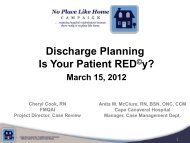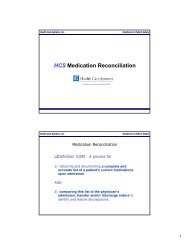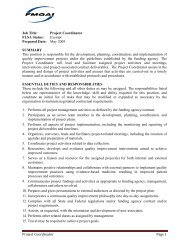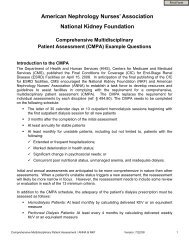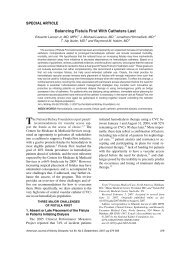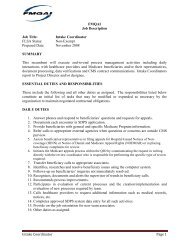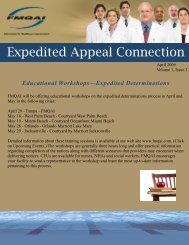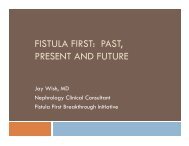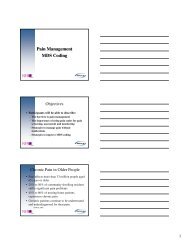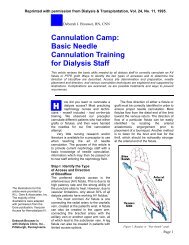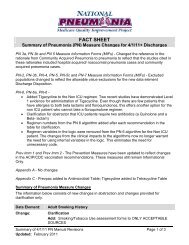The Nurse's Role in Promoting a Culture of Patient Safety - FMQAI
The Nurse's Role in Promoting a Culture of Patient Safety - FMQAI
The Nurse's Role in Promoting a Culture of Patient Safety - FMQAI
You also want an ePaper? Increase the reach of your titles
YUMPU automatically turns print PDFs into web optimized ePapers that Google loves.
Another program address<strong>in</strong>g patient safety is the United States Pharmacopoeia, which<br />
operates the Medication Errors Report<strong>in</strong>g Program with the Institute for Safe Medication<br />
Practice (ISMP). This program utilizes a voluntary report<strong>in</strong>g mechanism to track medication<br />
<strong>in</strong>cidents (Institute for Safe Medication Practices, 2005) Through its voluntary approach, this<br />
program promotes a systems approach to medication error analysis, and preventive strategies and<br />
recommendations can be shared with healthcare providers to avoid reoccurrences (Institute for<br />
Safe Medication Practices, 2005).<br />
A safety culture assessment can be a useful tool for improv<strong>in</strong>g patient safety, diagnos<strong>in</strong>g the<br />
safety culture <strong>of</strong> an organization, rais<strong>in</strong>g safety awareness, and identify<strong>in</strong>g opportunities for<br />
improvement (Nieva & Sorra, 2003). <strong>The</strong> IOM recommends “conduct<strong>in</strong>g an annual, confidential<br />
survey <strong>of</strong> nurs<strong>in</strong>g and other healthcare workers to assess the extent to which a culture <strong>of</strong> safety<br />
exists” (Page, 2004, p. 15). <strong>The</strong> Hospital Survey on <strong>Patient</strong> <strong>Safety</strong> <strong>Culture</strong> measures various<br />
dimensions <strong>of</strong> the culture, <strong>in</strong>clud<strong>in</strong>g both hospital and unit level aspects. <strong>The</strong> unit level aspects<br />
that are measured <strong>in</strong>clude:<br />
• Supervisor/manager expectations and actions promot<strong>in</strong>g safety;<br />
• Organizational learn<strong>in</strong>g—cont<strong>in</strong>uous improvement;<br />
• Teamwork with<strong>in</strong> units;<br />
• Communication openness;<br />
• Feedback and communication about error;<br />
• Nonpunitive response to error; and<br />
• Staff<strong>in</strong>g (Sorra & Nieva, 2004, p. 3).<br />
This survey, funded by AHRQ, can be found at www.ahrq.gov along with guidance for<br />
adm<strong>in</strong>istration and report<strong>in</strong>g the results. <strong>The</strong>re are other <strong>in</strong>itiatives that address the issues <strong>of</strong><br />
17



